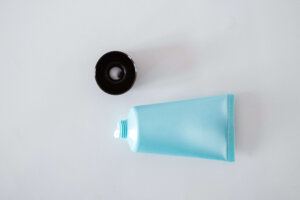Customized Care

Every individual has a unique skin type, and understanding yours is crucial for maintaining a healthy and radiant complexion. By identifying your specific skin type and tailoring your skincare routine accordingly, you can effectively address its unique needs and achieve optimal results. In this blog post, we will explore the various skin types and provide valuable tips on how to customize your skincare routine to cater to specific requirements.
Identifying Your Skin Type
Before diving into skincare customization, it is important to identify your skin type. Here are the most common skin types:
- Normal Skin: This is the ideal skin type characterized by balanced sebum production, minimal imperfections, and a smooth texture.
- Dry Skin: Dry skin lacks moisture, often appearing dull, rough, and flaky. It may feel tight or itchy, especially after cleansing.
- Oily Skin: Excess sebum production leads to oily skin, often accompanied by enlarged pores, a shiny appearance, and a higher likelihood of acne breakouts.
- Combination Skin: Combination skin exhibits both dry and oily areas. The T-zone (forehead, nose, and chin) is typically oilier, while the cheeks and other areas may be dry or normal.
- Sensitive Skin: Sensitive skin is prone to irritation, redness, and reactions to certain products or environmental factors. It requires gentle care to maintain its balance.
Customizing Your Skincare Routine for Specific Skin Types
1. Cleansing:
- Normal Skin: Opt for a gentle cleanser to maintain the skin’s natural balance.
- Dry Skin: Use a mild, hydrating cleanser that doesn’t strip away natural oils.
- Oily Skin: Look for a foaming or gel-based cleanser to remove excess oil and unclog pores.
- Combination Skin: Use a gentle cleanser on dry areas and a more targeted cleanser for the T-zone.
- Sensitive Skin: Choose a fragrance-free and hypoallergenic cleanser that soothes and calms the skin.
2. Moisturization:
- Normal Skin: A lightweight, non-greasy moisturizer will help maintain hydration without adding excess oil.
- Dry Skin: Opt for a rich, creamy moisturizer containing hydrating ingredients like hyaluronic acid and ceramides.
- Oily Skin: Use oil-free or gel-based moisturizers to avoid clogging pores while providing necessary hydration.
- Combination Skin: Apply a lightweight moisturizer to the dry areas and a mattifying product to the T-zone.
- Sensitive Skin: Look for a gentle, fragrance-free moisturizer with soothing ingredients like aloe vera or chamomile.
3. Sun Protection:
Regardless of skin type, sunscreen is crucial to protect against harmful UV rays. Choose a broad-spectrum sunscreen with an SPF of 30 or higher. Opt for lightweight, non-comedogenic formulas for oily or acne-prone skin.
4. Targeted Treatments:
Based on specific concerns, customize your routine with targeted treatments:
- Normal Skin: Maintain a balanced routine with occasional use of anti-aging serums or other specialized treatments.
- Dry Skin: Incorporate hydrating masks, facial oils, or serums to combat dryness and enhance moisture retention.
- Oily Skin: Use oil-controlling products, such as serums or spot treatments with salicylic acid to manage breakouts.
- Combination Skin: Spot treat oily areas while providing extra hydration to dry areas with appropriate products.
- Sensitive Skin: Opt for gentle treatments such as calming masks or serums with soothing ingredients like green tea or chamomile.
5. Regular Exfoliation:
Exfoliation helps remove dead skin cells and improve skin texture. However, the frequency and intensity should be adjusted based on your skin type. Gentle exfoliation once or twice a week is usually sufficient for most skin types, while sensitive skin may benefit from milder exfoliating agents.

Conclusion
Tailoring your skincare routine to your specific skin type is essential for achieving healthy and glowing skin. By identifying your skin type and customizing your cleansers, moisturizers, treatments, and other skincare products accordingly, you can effectively address your skin’s unique needs. Embrace your skin’s individuality and enjoy the benefits of a personalized skincare routine that enhances your natural beauty.

